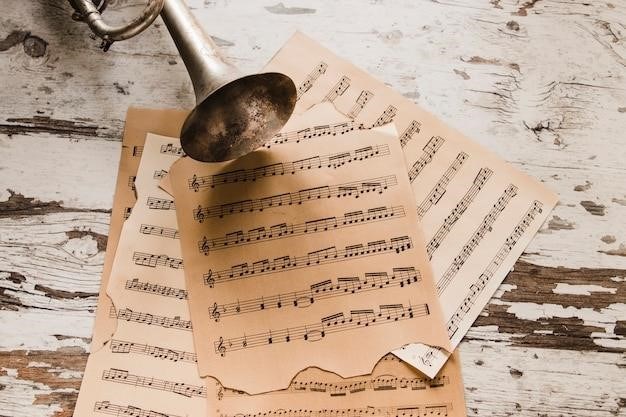Canon in D Sheet Music PDF⁚ A Comprehensive Guide
This guide will serve as your comprehensive resource for everything you need to know about finding, understanding, and playing the iconic Canon in D in PDF format. From its fascinating history and the genius of its composer to tips for playing and its impact on popular culture, we’ll explore all facets of this timeless musical masterpiece.
Introduction
Canon in D, the renowned musical composition by Johann Pachelbel, has captivated audiences for centuries with its elegant melodies and harmonious structure. This timeless classic is a staple in classical music repertoire, often gracing weddings, concerts, and other special occasions. Its enduring popularity has led to a plethora of arrangements and interpretations for various instruments, making it accessible to musicians of all skill levels.
The ubiquity of Canon in D has also spurred a demand for readily available sheet music, especially in the convenient PDF format. This format allows musicians to print, share, and access the score easily, regardless of their location or the availability of traditional sheet music stores. In this comprehensive guide, we will delve into the world of Canon in D sheet music in PDF format, covering its history, variations, and resources for acquiring this beloved piece.
Whether you’re a seasoned musician seeking a new challenge or a beginner eager to learn this classic, this guide will provide valuable insights and resources to embark on your journey with Canon in D sheet music in PDF format.
The History of Canon in D
Canon in D, despite its enduring fame, is shrouded in some historical mystery. While commonly attributed to Johann Pachelbel, it wasn’t published during his lifetime and its exact origins remain somewhat unclear. The piece is thought to have been composed around 1680, during Pachelbel’s time as organist in the German city of Nuremberg.
It was only in the 20th century that Canon in D gained widespread recognition and popularity. Its melodic beauty and unique structure, featuring a repeating theme played by different instruments, captured the hearts of audiences worldwide. The piece has been featured in numerous films, television shows, and commercials, solidifying its status as a cultural touchstone.
The history of Canon in D is a testament to the power of music to transcend time and inspire generations. While its exact origins may be debated, its enduring impact on the world of music is undeniable. The piece continues to be a beloved classic, cherished for its timeless elegance and universal appeal.
Johann Pachelbel⁚ The Composer
Johann Pachelbel (1653-1706) was a prominent German Baroque composer and organist. While he composed a substantial body of work, including cantatas, hymn settings, and chamber sonatas, he is primarily remembered for his iconic Canon in D. Pachelbel’s musical style was deeply rooted in the Baroque era, characterized by its intricate counterpoint, rhythmic vitality, and expressive harmonies.
His compositions often showcased the virtuosity of instruments like the organ and violin, reflecting the technical advancements of the time. Pachelbel served as a church organist in various German cities, including Nuremberg, where he is believed to have composed Canon in D. His work was highly regarded during his lifetime, but it wasn’t until the 20th century that his music experienced a revival, reaching a global audience.
Pachelbel’s legacy rests not only on the enduring popularity of Canon in D but also on his significant contributions to the development of Baroque music. His compositions continue to inspire musicians and audiences alike, demonstrating the timeless power and beauty of his musical genius.
Canon in D⁚ A Timeless Classic
Canon in D, also known as “Canon and Gigue in D major,” is a musical masterpiece that transcends time and genre. Its enduring popularity is a testament to its simple yet profound beauty, its versatility, and its ability to evoke a wide range of emotions. The piece’s structure, based on a repeating melody played in a staggered fashion by multiple instruments, creates a sense of flowing continuity and harmonic richness.
The melody itself is instantly recognizable, with its gentle, cascading phrases and elegant grace. The use of the bass ostinato, a repeated bass line, provides a solid foundation for the melodic interplay, creating a sense of groundedness and stability. Canon in D is often described as a “wedding march” due to its celebratory and romantic feel, but its versatility extends beyond traditional wedding ceremonies.
It is frequently used in a variety of settings, including concerts, recitals, and even film scores. Its timeless appeal lies in its ability to evoke a sense of tranquility, joy, and profound beauty, making it a truly universal musical language that resonates with audiences across generations.
Variations and Arrangements
The enduring popularity of Canon in D has inspired countless variations and arrangements, showcasing its adaptability and versatility across various musical styles and instruments. From solo piano arrangements to full orchestral versions, the piece has been reinterpreted in countless ways, each offering a unique perspective on its timeless beauty.
Some arrangements emphasize the original Baroque style, preserving Pachelbel’s delicate melodic lines and harmonic structure. Others explore more contemporary interpretations, incorporating elements of jazz, rock, or even electronic music. These variations demonstrate the piece’s inherent flexibility, allowing musicians to infuse it with their own creative vision.
Whether you’re seeking a faithful rendition of the original composition or a fresh and innovative interpretation, the vast array of arrangements available ensures there’s a version of Canon in D to suit every taste and musical preference. This wealth of options makes it a truly accessible piece for musicians of all skill levels, allowing them to explore its intricate beauty and captivating melody in their own unique way.
Popular Instruments for Canon in D
Canon in D’s enduring appeal extends beyond its beautiful melody and harmonic structure. Its simplicity and versatility make it a favorite among musicians playing a wide range of instruments, each offering a unique perspective on the piece.
The most common instruments for Canon in D include the piano, violin, cello, and guitar. These instruments, with their distinct timbres and playing techniques, allow musicians to showcase the piece’s melodic beauty and harmonic richness in diverse ways. Piano arrangements often emphasize the piece’s majestic chords and rhythmic drive, while violin and cello versions highlight its lyrical qualities and emotional depth.
However, Canon in D’s adaptability transcends traditional instruments. It has been arranged for wind instruments like the flute and clarinet, as well as for ensembles like string quartets and even full orchestras. Each instrumental interpretation brings a unique sonic texture and character to the piece, further enriching its timeless appeal.

Free Sheet Music Resources
The internet has revolutionized access to musical scores, making it easier than ever to find free sheet music for Canon in D. Numerous websites offer a wealth of resources, catering to various skill levels and instrumental preferences. These platforms are invaluable for both budding musicians and seasoned players looking for new arrangements or alternative versions of this iconic piece.
Websites like Musescore.com and 8notes.com boast extensive libraries of free sheet music, including numerous arrangements of Canon in D for various instruments. You’ll find versions for solo piano, violin, cello, guitar, and even ensembles. Many of these sites also provide MIDI files, allowing you to listen to the piece as you play along. These interactive features make learning and practicing Canon in D even more engaging.
While free resources are abundant, it’s essential to verify the legitimacy of the source. Look for reputable websites with a history of providing accurate and legal sheet music. Always double-check the copyright information to ensure you’re using the music ethically. By utilizing these free resources responsibly, you can enjoy the beauty and accessibility of Canon in D without breaking the bank.
Finding Canon in D Sheet Music in PDF Format
Once you’ve decided to embark on your musical journey with Canon in D, finding a PDF version of the sheet music is a straightforward process. The internet offers a plethora of options, catering to different needs and preferences. You can find both free and paid resources, each with its own advantages.
Free sheet music websites are a popular starting point. Sites like Musescore.com and 8notes.com host extensive libraries, including various arrangements of Canon in D for piano, violin, cello, and more. These websites often provide MIDI files for playback, enhancing the learning experience. However, it’s crucial to ensure the legitimacy of the source and verify copyright information.
If you’re looking for a more polished and professional experience, consider purchasing sheet music from reputable online retailers. These platforms offer high-quality PDFs, often with added features like annotations and performance notes. Platforms like Musicnotes.com and Sheet Music Plus provide a wide selection of arrangements, including those specifically tailored for different skill levels. While paid resources may come at a cost, they often offer a more refined and reliable experience.
Tips for Playing Canon in D
Mastering Canon in D is a rewarding musical journey, and with a few helpful tips, you can enhance your performance and appreciation for this timeless piece. The first step is to familiarize yourself with the basics of musical notation. Understanding the key signature, time signature, and note values will lay a solid foundation for interpreting the sheet music. Once you’ve grasped the fundamentals, you can start practicing the individual parts, focusing on accuracy and rhythm. Remember, Canon in D is a canon, meaning the melody is repeated by different voices or instruments, starting at different points in time. Therefore, understanding the structure of the canon is crucial for achieving a harmonious performance.
Practice the bass line first. This repeating sequence forms the foundation of the piece and provides a strong rhythmic backbone. Once you’re comfortable with the bass line, you can gradually add the other voices, focusing on the interplay between the different parts. Remember to pay attention to dynamics and phrasing, adding expression and nuance to your performance. A well-executed Canon in D should evoke a sense of elegance, beauty, and tranquility. Don’t be afraid to experiment with different tempos and articulations, finding your own unique interpretation of this beloved classic.
Finally, don’t underestimate the power of listening. Immerse yourself in recordings of Canon in D by renowned musicians, paying attention to their phrasing, dynamics, and overall style. Listening to these recordings can provide valuable insights and inspiration, helping you refine your own performance. Remember, practice makes perfect, and with dedication and patience, you can master the art of playing Canon in D.
Canon in D in Popular Culture
Canon in D’s enduring appeal transcends the realm of classical music, deeply embedding itself in popular culture. This timeless piece has been featured in countless films, television shows, and commercials, adding a touch of elegance and emotion to various narratives. Its calming melody and harmonious structure make it a perfect choice for scenes of love, romance, and reflection, often serving as a background score for intimate moments or poignant transitions. From romantic comedies to dramatic dramas, Canon in D has become synonymous with heartfelt moments that resonate with audiences.
Beyond its cinematic presence, Canon in D has also found a home in the world of advertising. Its versatility allows it to evoke a wide range of emotions, from nostalgia and warmth to sophistication and luxury. Whether it’s a commercial for perfume, jewelry, or a luxury car, Canon in D’s elegant soundscape adds an aura of prestige and refinement to the brand. Its use in popular culture has further cemented its status as a universally recognized and beloved musical piece, transcending cultural and generational boundaries.
The piece’s prominence in popular culture is a testament to its enduring power and versatility. It has become a musical shorthand for conveying a wide range of emotions and creating memorable moments in various media. Its presence in popular culture ensures that Canon in D remains a timeless and treasured piece, continuing to inspire generations of musicians and audiences alike.
Canon in D, a musical masterpiece composed by Johann Pachelbel, continues to enchant audiences centuries after its creation. Its timeless beauty, elegant simplicity, and profound emotional resonance have made it a beloved classic across cultures and genres. Whether you’re a seasoned musician or a curious beginner, exploring the world of Canon in D sheet music opens a gateway to a rich musical experience.
The availability of Canon in D sheet music in PDF format allows for easy access and convenient practice. Whether you seek a simplified arrangement for a beginner or a challenging version for an experienced musician, there’s a sheet music PDF out there for every skill level. The abundance of free resources online further democratizes access to this musical treasure, making it available to anyone with a passion for music.
In conclusion, Canon in D sheet music in PDF format provides a gateway to a world of musical exploration. From its historical context to its contemporary relevance, the piece continues to inspire and captivate audiences, making it a true testament to the enduring power of music.
Where to Learn More
The world of Canon in D is vast and fascinating, and there are numerous resources available for those who wish to delve deeper into its history, musical structure, and cultural impact. For those interested in the life and work of Johann Pachelbel, the composer of Canon in D, exploring his biography and other compositions can provide valuable insights into the musical context of his time. Numerous online resources and academic publications offer detailed information about Pachelbel’s life, musical style, and contributions to the Baroque era.
To further enhance your understanding of Canon in D, consider exploring resources on music theory, specifically focusing on the concept of a canon. This will provide insights into the unique structure of the piece and how it creates its characteristic interwoven melodies. Additionally, exploring the history of the Baroque era and the instruments commonly used during that period can provide a richer understanding of the context in which Canon in D was composed.
Finally, engaging with the vast online community of musicians and music enthusiasts can be a valuable resource. Forums, blogs, and social media groups dedicated to classical music often offer discussions, analyses, and performance videos related to Canon in D, providing a platform for sharing knowledge and appreciation for this timeless masterpiece.




Be the first to reply